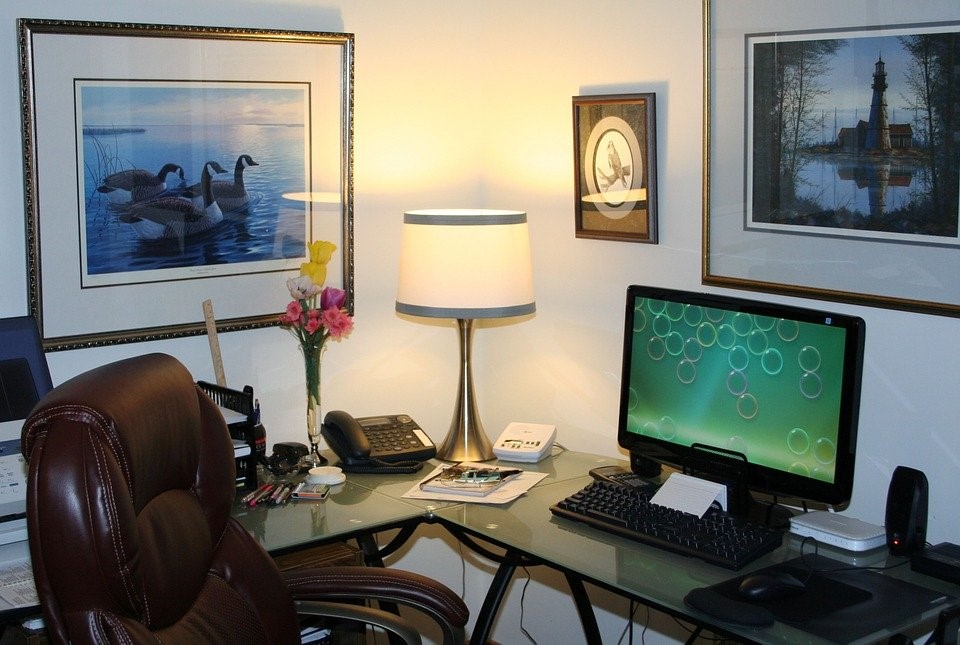10 Tips for Remote Workers for Working from Home
by Avantix Learning Team | Updated March 16, 2020
With the increase in cases of COVID-19 or Coronavirus as well as the drastic increase in digital technologies and new types of jobs, the number of people working remotely is rising significantly. Because of this change in the way many people are working, we've compiled a list of 10 tips on how to be a productive remote worker for both veterans and newbies. Although not all remote / mobile workers work from home (some will work at other remote locations if they can), as long as you have access to the internet, many jobs can be done from almost anywhere in the world. Remote workers can experience an independence and flexibility not available in a traditional office setting but there are several challenges that remote workers may need to overcome to work from home successfully.
Here are ten ways to help you be a productive remote worker while still prioritizing your self-care.
1. Plan and invest in your workspace
Remote workers normally rely on a solid internet connection for work and research as well as the ability to make and receive calls and to send and receive messages. Most of these workers rely on a computer, phone and internet connection. Therefore, it's important to purchase good quality and reliable technology. This may include a laptop computer, desktop computer, tablet, ergonomic keyboard, microphone (depending on the type of job), router and phone, even if it does mean higher upfront costs.
For those constantly on the go, a personal and portable Wi-Fi connection can be a great option. Some internet providers even offer chargeable routers that still allow customers to use the internet when the power is out. Remote workers should consider investing in a pair of quality, noise cancelling headphones so that they can take calls at anytime without providing noise feedback to listeners. Some remote workers will also purchase multiple monitors, and often larger screens, to work more efficiently.
You should also invest in a good quality chair and, ideally, an adjustable desk. Dealing with back, shoulder, neck or hand pain because of a bad office setup will end up costing you both time and money.
If you can, arrange your workspace so it will get exposure to natural light. In a study published by Rand Health Quarterly, exposure to natural light affects sleep which in turn affects health, well-being and productivity. It's best not to work in your bed as this may impact your ability to sleep there.
Try to keep the space clean and organized and if you have the room, consider setting up two spaces for variety.
2. Figure out your own work pattern and style
It's important to find out what works for your job, your needs and the way you work. You'll need to consider several things in order to develop a consistent and productive work pattern and style. Try to gauge your level of productivity at different times throughout the day. You should also consider trying to work in different locations to see what workspace works best for your working style. Doing this will allow you to determine when and where it's best to set your work schedule for optimal productivity.
Maybe you work best in sprints and take breaks often, or maybe you're the opposite and like longer-winded working sessions. At the end of the day, we're all different, so don't be afraid to experiment.
3. Make a schedule and stick to it
One of the most important things you can do as a remote worker is to set a daily schedule. Create a list of tasks and allocate the time that you need to spend on each item, and be sure to include breaks as well. In order to stay focused, set alarms to indicate how long you should be working on each task and input the blocks of time into your online scheduling tool (if you use one). Try to keep your downtime to one hour.
Some successful remote workers set and review their schedule a day in advance so that they can make sure to prioritize future tasks and get in the right mindset to start their day. Whether you plan your workday a day ahead or on the day of, don't forget that you need to schedule breaks and actually take them when the time comes – no one wants you to burn out.
It's also important to know when to clock out and stop working. Of course, there will be days when tasks take more time than you planned, but it's best not to make this a habit. Determine what time you will stop working every day and include this in your daily schedule. If you have a hard time stopping work at the end of the day, try to plan activities like getting together with a friend or family member or making dinner. Signing up for an paid activity or class that you can't cancel is a good way to stay motivated and stay true to your clock out time.
4. Reduce distractions
When you work from home, distractions can be a big issue. It's a good idea to keep the TV off during work time and limit social media use that is unrelated to work. If you're watching hundreds of cat videos on YouTube during the day, it might be time to do some self-reflection.
You may also think you can have the TV on while you're working, but multiple studies have proven that multitasking doesn't work (and is even bad for you). If you want to watch recreational programming on TV during the day, schedule it as downtime and then turn it off when time is up, and you need to get things done.
5. Maintain consistent communication
Even though you may work remotely, you should keep in regular contact with clients and coworkers. It's also important to keep track of your work and communicate your progress to the necessary stakeholders. Schedule regular meetings or check-ins with your manager, team or client over the phone or through a web conference application. Meet a minimum of once per week if you can. You can share your progress, goals, areas of concern and ideas for future projects. When working remotely, it is just as important to ask questions as it is to communicate the work you have completed.
Working full-time remotely may not be the best option for everyone, particularly from a communication standpoint. If you can manage it, try to stagger your time as a remote employee with some in-person office time or face-to-face meetings in order to streamline communication. Some remote workers will work 3 days remotely and 2 days at an office where they can meet with their team to collaborate in-person.
6. Find an online community
As a remote worker, you may find yourself feeling isolated because you spend so much time at home, without the socialization that comes with a standard office environment. A simple yet productive fix can be to start working with others in your field through an online community. There are many online forums and Facebook or LinkedIn groups dedicated to remote workers or workers in specific fields where you can share ideas, tips and tricks while connecting with other remote workers around the globe.
Staying connected and sharing advice with people in similar positions can allow you to gain peer support and to feel like you are part of a community, even though you're not in an office.
7. Get ready for work
As a remote worker, you might not visit an office daily, but it is still important to transition to work mode. One of the best things you can do is to have a morning routine where you wake up at the same time and get ready for work. Consider starting your day by eating breakfast, having a coffee or tea, changing into your work clothes, turning on your devices and checking your schedule for the day. At the very least, get out of your pajamas, wash your face and brush your teeth. Having a routine to get you prepared for the workday will help you form good habits and will also help you differentiate between work and personal time.
8. Find suitable workspaces (when you're not at home)
Many mobile workers may work in cafes or coffee shops, but these locations lack guaranteed seating and are often too loud for professional work calls or video conferences. Avoid working at certain locations if noise and uncertain seating are a problem for you.
Another way to feel more connected with the "real world" is to find a desk at a collective workspace. These collective workspaces are popping up in large cities across the globe and can be the perfect place for beginner or veteran remote workers to stay productive, network with others and gain inspiration. Collective workspaces can provide you with a sense of community and motivation. There are also spaces where you can take calls privately. The downside to this option is that you must pay rent for your spot, so if this is not an option for you, a local library is also a good option. There they usually have private rooms that you can rent for free or at a low cost, although space is never guaranteed. Try and experiment by visiting different workspaces to see what suits you and your work style best.
In a scenario such as a viral outbreak where health and safety are a primary concern, working from home is the recommended option.
9. Determine optimal working times if you work with clients or coworkers in different time zones
If you are working remotely with clients or coworkers in different time zones, then you'll need to determine the times when most work needs to be done, when you can communicate with people in other areas, as well as when you are the most productive.
For example, if you teach English to students in another country, then you would need to schedule working times during the most popular times that the students take classes and prepare yourself to be well-rested during these times. Knowing the demands of your job and how to adjust to different requirements is key to having a productive work schedule. Whatever your situation is, try to work at the times where you feel the most productive and alert.
10. Make time for exercise, eating well and practicing self-care
While it is important to develop a routine, that routine does not have to be as rigid as when you were commuting to an office every day. You do have some flexibility, so use it!
Take time to exercise or move around when you are feeling sluggish. Sitting at a desk for 8 hours will cause back, shoulder and other problems. There are thousands of exercise videos online that you can use if you can't get out to a gym.
Stock your fridge with healthy foods and take time to prepare meals so you can eat well. Eating well and exercising will also help make you more productive. Also, try opening up a window to get some fresh air. If it's a beautiful day and you can spare fifteen minutes, go for a walk.
It's also important for health, well-being and productivity to get enough sleep. Rand Health Quarterly notes that the Centers for Disease Control and Prevention (CDC) in the United States has declared insufficient sleep a public health problem. Insufficient sleep is a concern in other countries including Canada, United Kingdom, Japan and Germany.
Working remotely can also give you more time since you have cut out commuting time. Perhaps you can start your workday earlier and end earlier and enjoy the rest of the day (or vice versa).
Whatever it is, be sure to do what works best for you and enjoy the benefits that remote work can offer.
Subscribe to get more articles like this one
Did you find this article helpful? If you would like to receive new articles, join our email list.
If you want to learn a new skill, you may be interested in the following courses
Microsoft Excel: Intermediate / Advanced
Microsoft Word: Intermediate / Advanced
Microsoft PowerPoint: Intermediate / Advanced
Microsoft Excel: Introduction to Visual Basic for Applications (VBA)
Our instructor-led classroom training courses are delivered at our downtown Toronto location at 1 Yonge Street, Suite 1801 (Toronto Star Building), Toronto, Ontario, Canada (some courses may also be delivered at an alternate downtown Toronto location). Contact us if you'd like to arrange custom training at your office on a date that's convenient for you.
To request this page in an alternate format, contact us.
Copyright 2024 Avantix® Learning
You may also like
Zoom Keyboard Shortcuts (50+ Shortcuts to Save Time During Your Virtual Meetings, Training and Webinars)
As a tool for virtual calls, meetings and webinars, Zoom has exploded recently with a huge group of users transitioning to working remotely. We've put together a complete list of keyboard shortcuts for both Windows and Mac users to help you work for effectively with Zoom.
Microsoft Teams Keyboard Shortcuts (40+ Shortcuts)
If you're a Microsoft Teams user, you can save alot of time using your keyboard to access Teams commands. Check out this essential list of keyboard shortcuts for Microsoft Teams for Windows users (Desktop).
Training Methods for the Virtual Classroom (12 Popular Strategies and Tools)
Training methods that are used in a virtual classroom need to support learning objects and should also be engaging, appropriate for the type of training and the virtual space, viable and cost-effective. Many training methods can be used both in a live classroom and in a virtual one …
Microsoft, the Microsoft logo, Microsoft Office and related Microsoft applications and logos are registered trademarks of Microsoft Corporation in Canada, US and other countries. All other trademarks are the property of the registered owners.
Avantix Learning | 1 Yonge Street, Suite 1801 (Toronto Star Building), Toronto, Ontario, Canada M5E 1W7 | info@avantixlearning.ca















